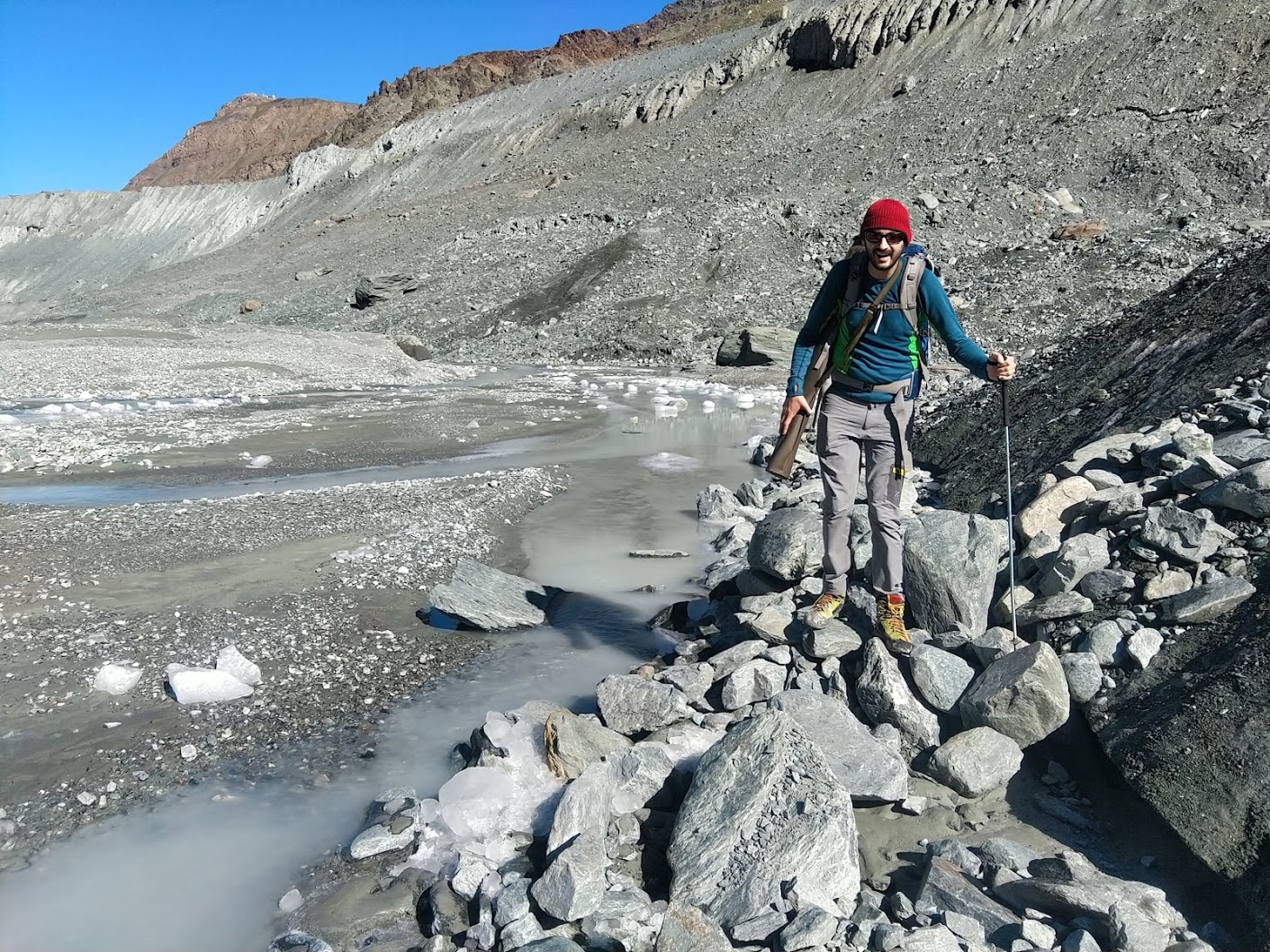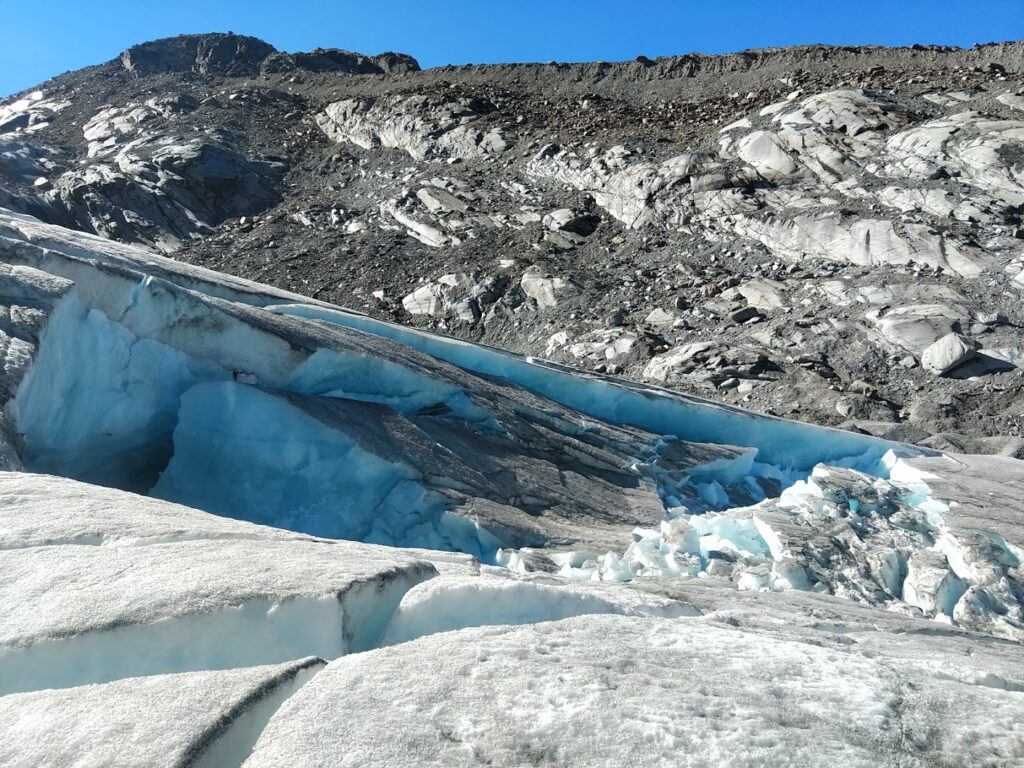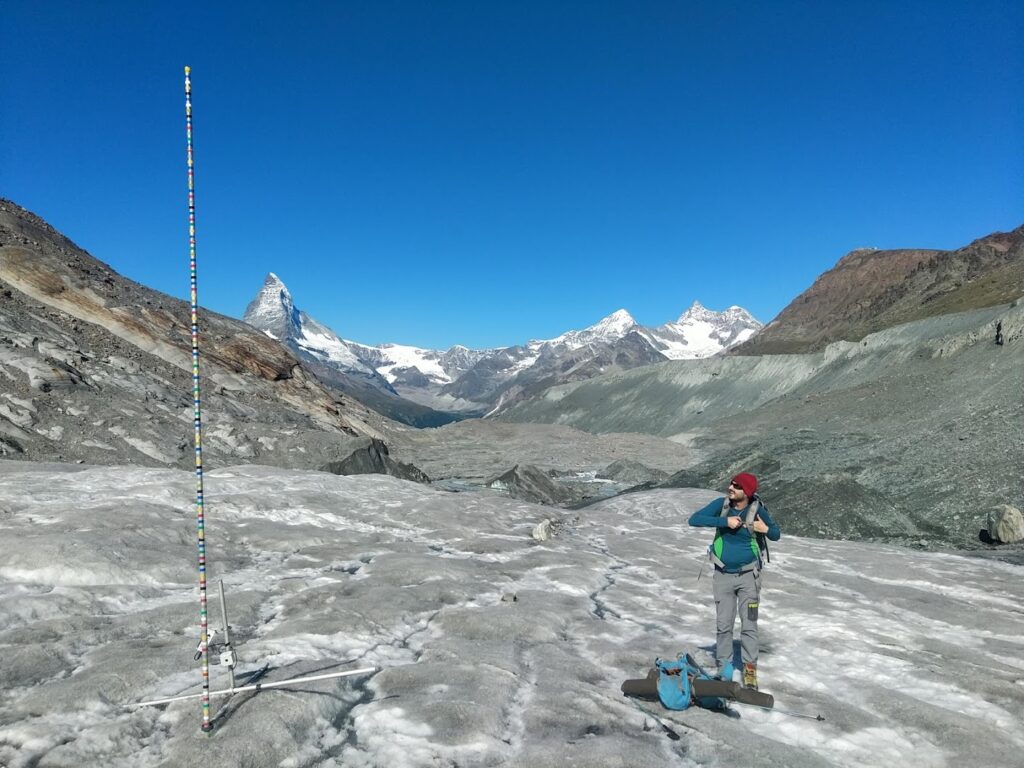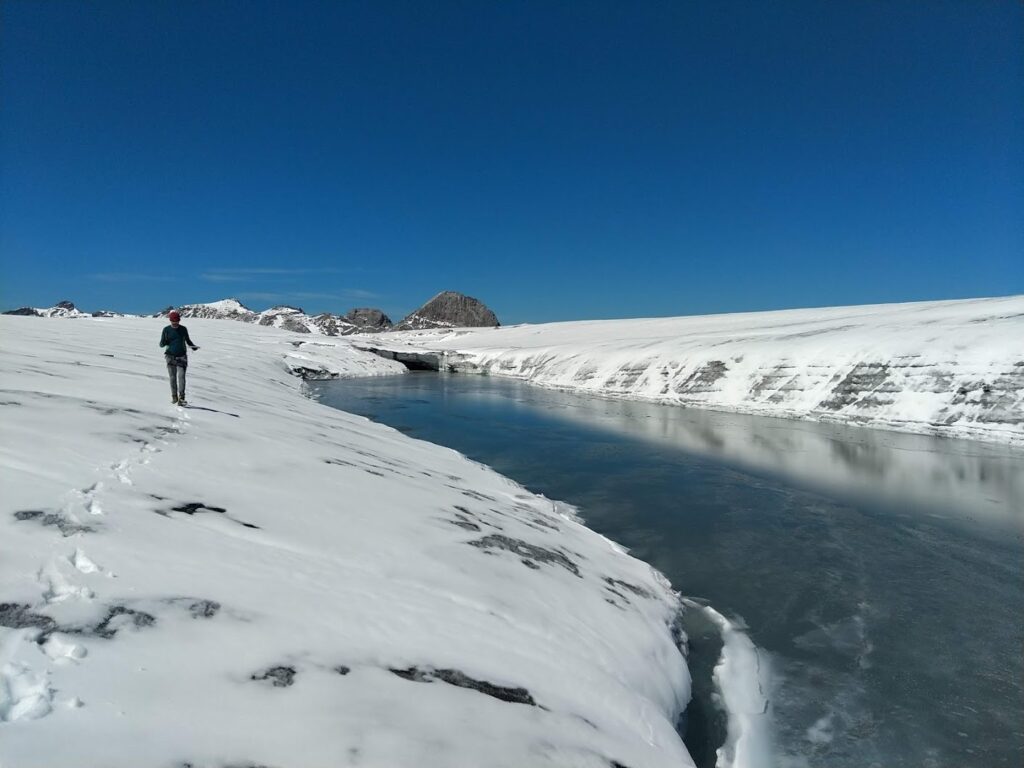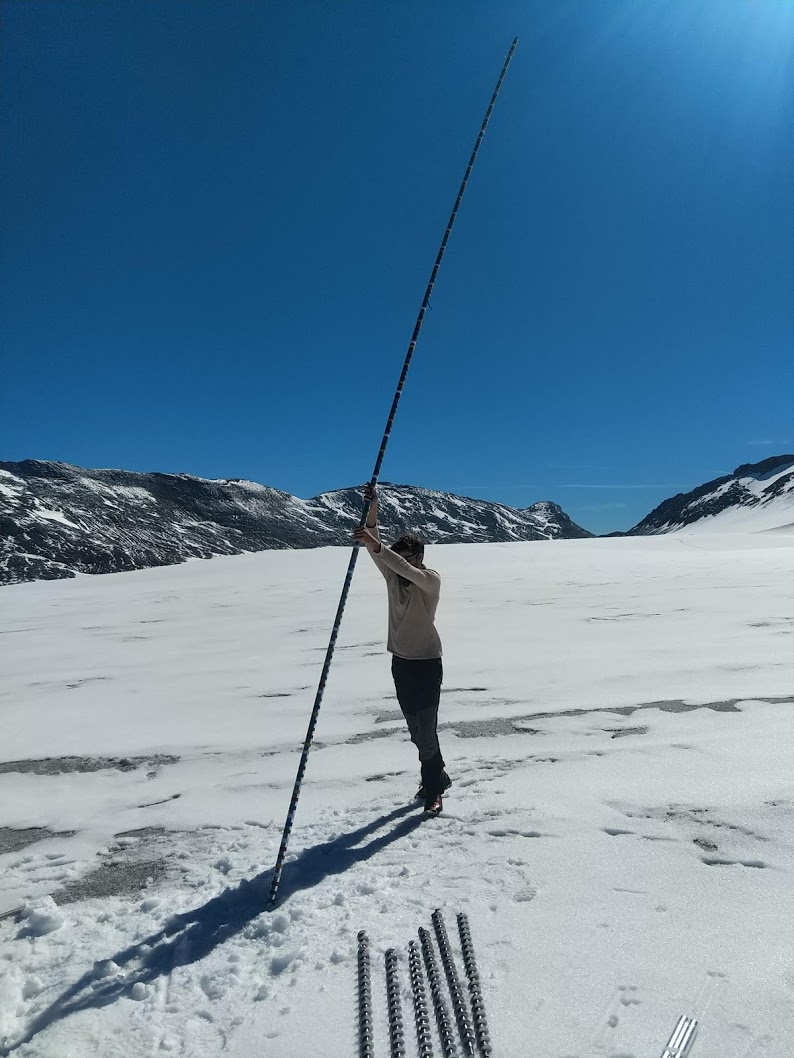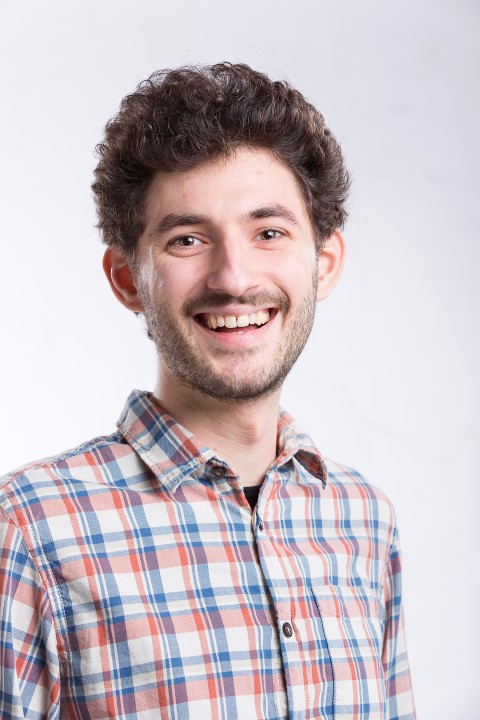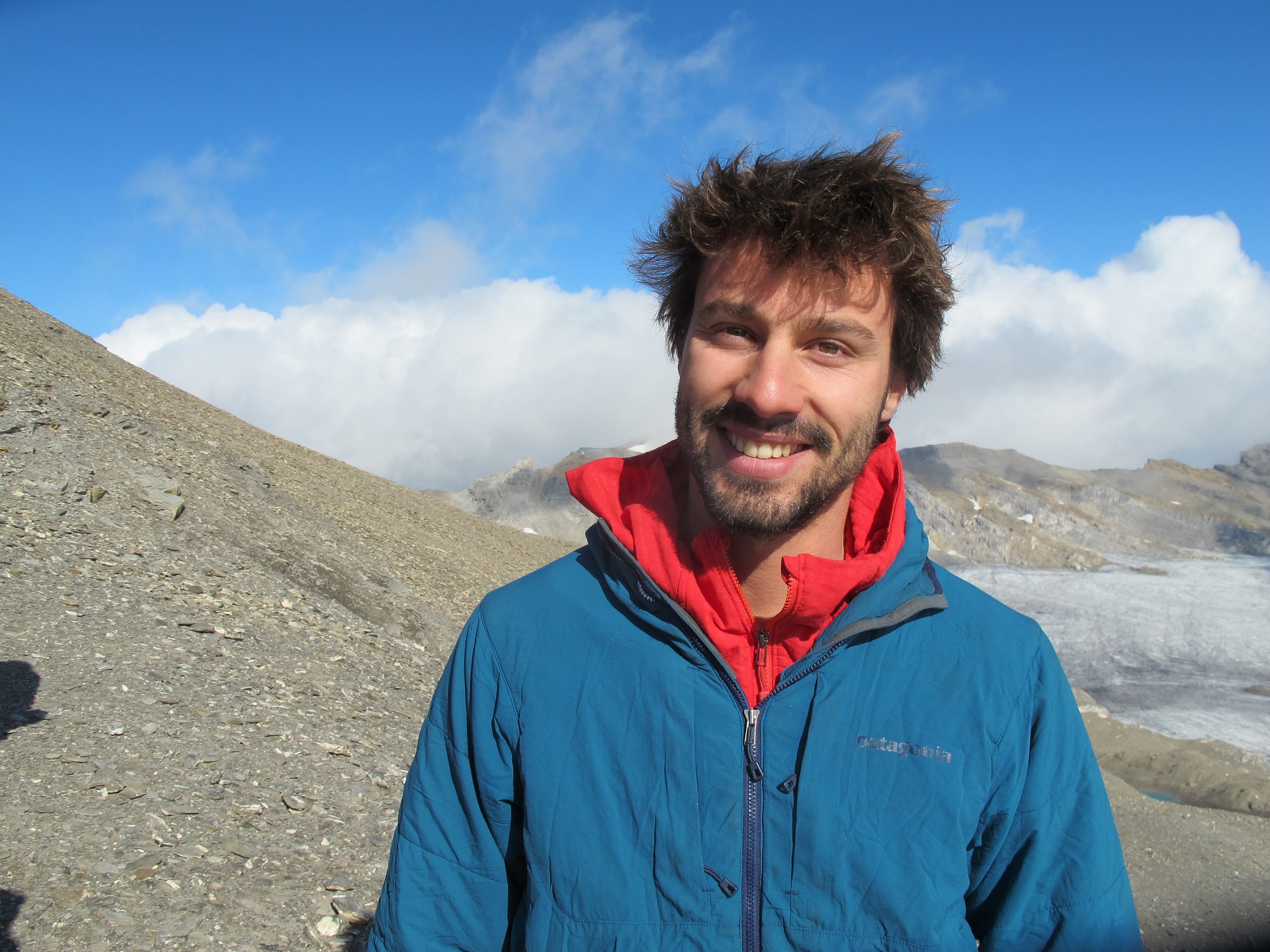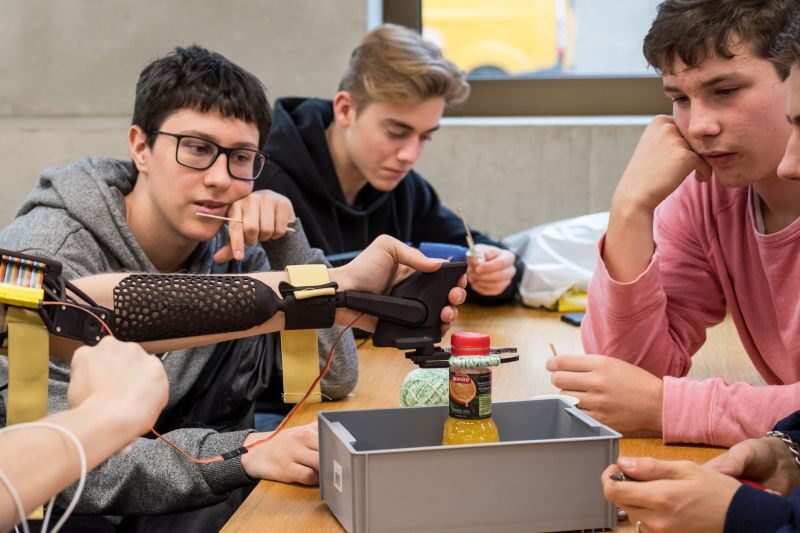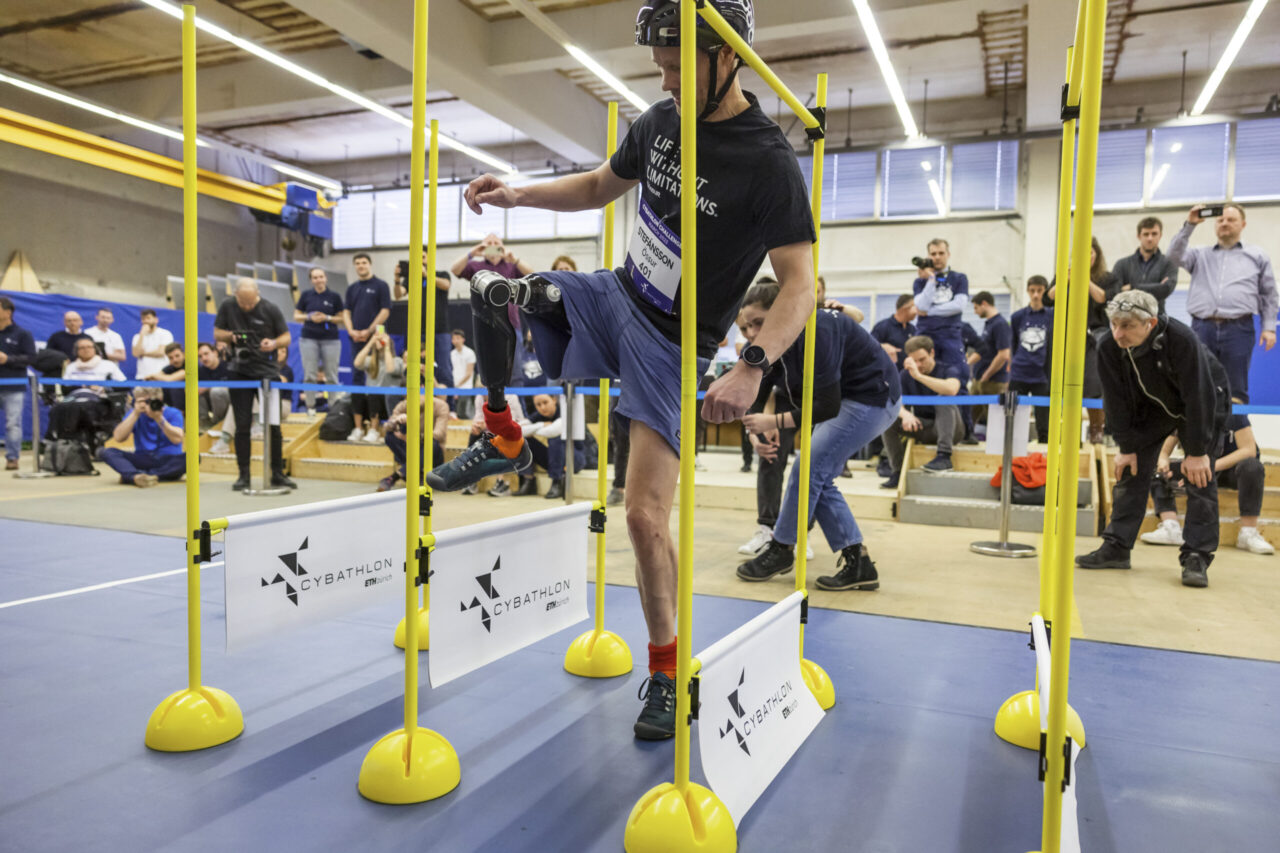Tuesday, 4 August 2020, 4.30 p.m., somewhere in the sea of tail lights on the highway between Zurich and Bern. We, that’s scientific assistant Christophe Ogier and doctoral student Johannes Landmann, didn’t know at that time that it would take us more than five hours to get from Zurich to the first of our two field trip stops: Zermatt.
Our two-day mission goal is to contribute a little field work piece to a big scientific puzzle. We would maintain and redrill the ice melt stakes of our near real-time glacier melt camera stations on the glacier surface. These stations allow us to retrieve daily estimates of ice loss for one point in space. We then assimilate these estimates into a bigger ensemble modelling framework, which can help us to better manage future water shortages caused by the shrinking glaciers in our country.


